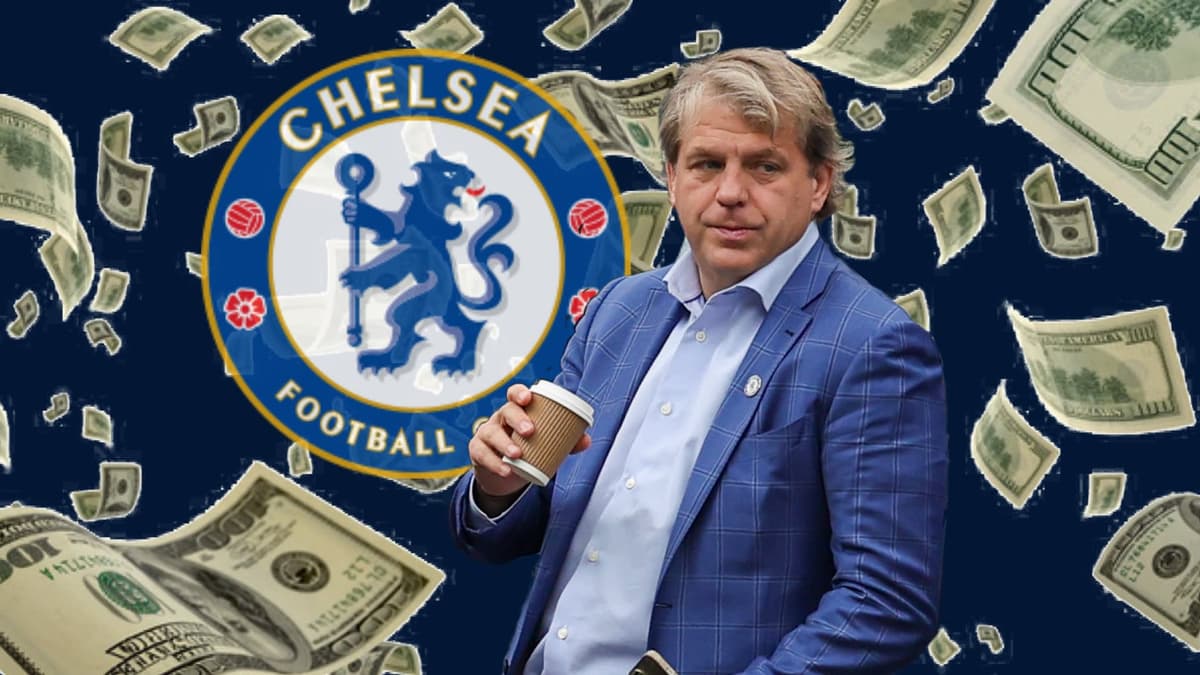-
DONE DEALS
- 27 minutes ago
One year since Todd Boehly's Chelsea takeover: 365 days of CHAOS

£550 million.
That’s how much the Chelsea owners have spent in the transfer market.
Todd Boehly and Co. have only been at the club for a year. Yet they have already paid more for players than some Premier league sides have in their entire history.
MORE: Poch's first signing! New Chelsea boss APPROVES €60m hijack on former club
Todd Boehly and Co.’s takeover
Since 2003, when Roman Abramovich bought the club, Chelsea have been the most successful side in English football.
Five Premier League titles, two Champions League trophies and eight domestic cups later, the Russian billionaire was forced out of the west London club last May.
Russia’s invasion of Ukraine pressed the UK Government to seize control of Chelsea and oversee the process of finding a new owner.
The Blues “received more than 250 enquiries, held discussions with over 100 individuals and entities, and entered into 32 confidentiality agreements,” according to a club statement.
But after a remarkable procedure, which involved the likes of Lewis Hamilton, Serena Williams and Lord Sebastian Coe, it was the Todd Boehly-led consortium that came out victorious in a deal worth £4.25 billion.
The new ownership group, involving Boehly, Clearlake Capital, Mark Walter and Hansjoerg Wyss, had completed the most expensive purchase of a professional sports team in history.
But the spending didn’t stop there.
Record spending
Chelsea spent £270m last summer - the second-most ever in a single transfer window at the time, behind Real Madrid in 2019 (£278m).
Wesley Fofana (£70m), Marc Cucurella (£60m), Raheem Sterling (£50m), Kalidou Koulibaly (£33m) and Pierre-Emerick Aubameyang (£10m) were the high-profile names brought in to improve the squad.
And with that, the club expected then-manager Thomas Tuchel to lead the side to a top four finish at the bare minimum.
But none of the new signings found the form that earned them moves to Stamford Bridge, a key reason for the west London club’s struggles at the start of the 2022-23 campaign.
Chelsea shouldn’t have sacked Tuchel.
Bayern shouldn’t have sacked Nagelsmann.— Stefan Bienkowski (@SBienkowski) May 25, 2023
As a result, the owners decided to go in another direction, sacking Tuchel and soon replacing him with former Brighton boss Graham Potter.
And Potter had the new-look Chelsea team performing well for a brief spell before the World Cup halted the season in November.
But not long after the Premier League resumed, he had a significantly different squad to work with.
The Chelsea owners doubled down on their approach of seemingly limitless spending in January.
It’s notoriously more challenging to complete deals in the midseason window, but the Blues made a mockery of that notion with their activity.
The acquisitions of Mykhailo Mudryk (£62m), Benoit Badiashile (£35m) and Noni Madueke (£31m) were clear evidence of that.
But nothing emphasised it more than the Premier League record £105m signing of World Cup winner Enzo Fernandez on Deadline Day of all times - not to mention the equally unbelievable £10m cost of bringing Joao Felix to the club on a six-month loan deal.
Chelsea’s January spending reached £280m with the Fernandez deal, breaking Madrid’s aforementioned record, and took their season spending to £550m – accountable for an incredible 37% of the Premier League total.
A signal of intent or an act of lunacy? The west London club’s transfer strategy is certainly up for debate.
Long-term contracts
Questions have been asked about Chelsea’s ability to spend a fortune in the transfer market, especially with so few outgoing players.
But the Blues owners appear to have found a way to navigate Financial Fair Play rules.
The cost of a transfer is spread over the number of years on the player’s contract, so Chelsea have been counteracting extortionate fees with long-term deals.
Todd Boehly and Co. signed Mudryk from Shakhtar Donetsk for an initial £62m. Over the eight-and-a-half years that he is contracted to the club, that works out at just over £7m per year towards FFP.
Mykhailo Mudryk on Instagram: “Dear God, if today I lose my hope just remind me that your plans are better than my dreams. Thanks for your support blues this season.” pic.twitter.com/CO3TqxY55z
— Pys (@CFCPys) May 29, 2023
Another crucial component to the method is that player sales do not work in the same way as signings. The entirety of the transfer fee counts towards FFP.
So Jorginho’s £12m sale to Arsenal covers the first year of Mudryk’s transfer, for example.
It seems genius on the face of it but there are significant risks attached. The club will struggle to move on underperforming players tied down to lengthy deals – and some of the signings are bound to fail.
Will other teams look to copy Chelsea in the summer transfer window or is there a reason nobody has bought into this idea before?
The Future
With Chelsea finishing in 12th position in the Premier League table, it is fair to say that the club’s transfer strategy has been exceptionally poor.
Today the 2022-2023 season ended.
It has been a really tough one, where we have not delivered the performances and results required for the standards of this football club.
Although it would be easier to blame someone else, it is time to look at ourselves and be… pic.twitter.com/NRSVojljoa— César Azpilicueta (@CesarAzpi) May 28, 2023
While others will reserve judgement until the current crop of wonderkids have - hopefully - developed into superstars.
But what’s most important is the owners view of the situation as that will shape the future of the club.
There’s a chance that they tone back the level of spending in the upcoming window. Would that be a result of this season’s failings or always part of the plan?
Or the Blues could continue with the ‘scattergun’ approach to the transfer market.
The only certainty is that the Chelsea owners first year in charge will be remembered for years to come.



















